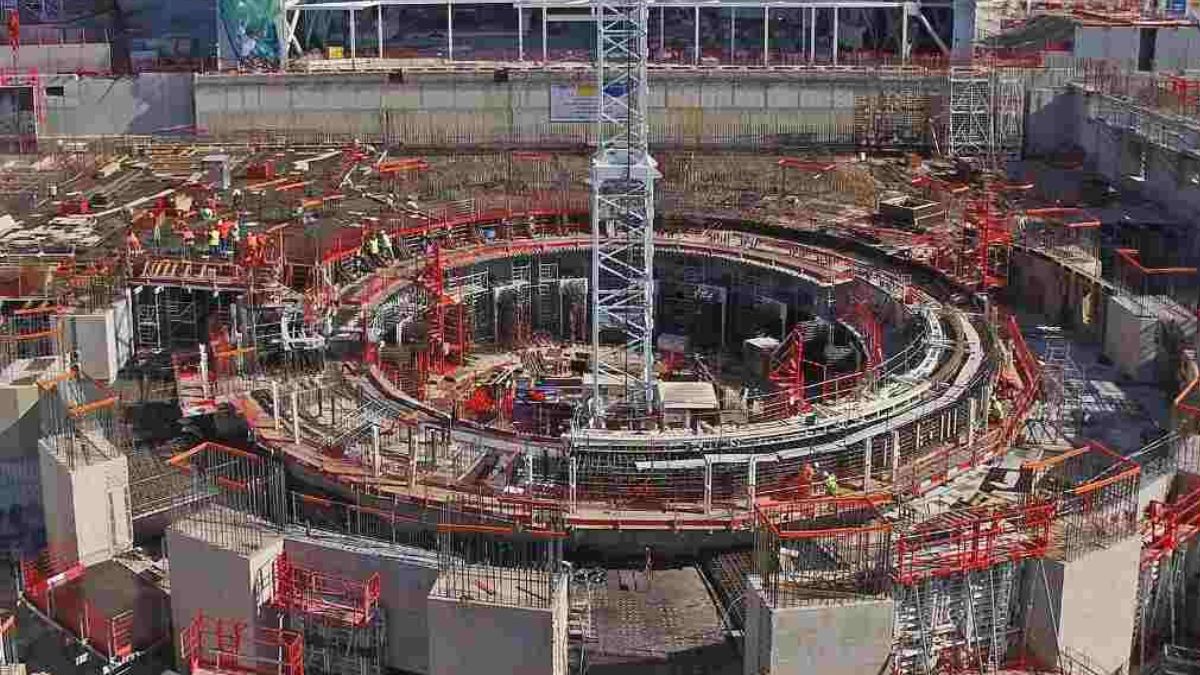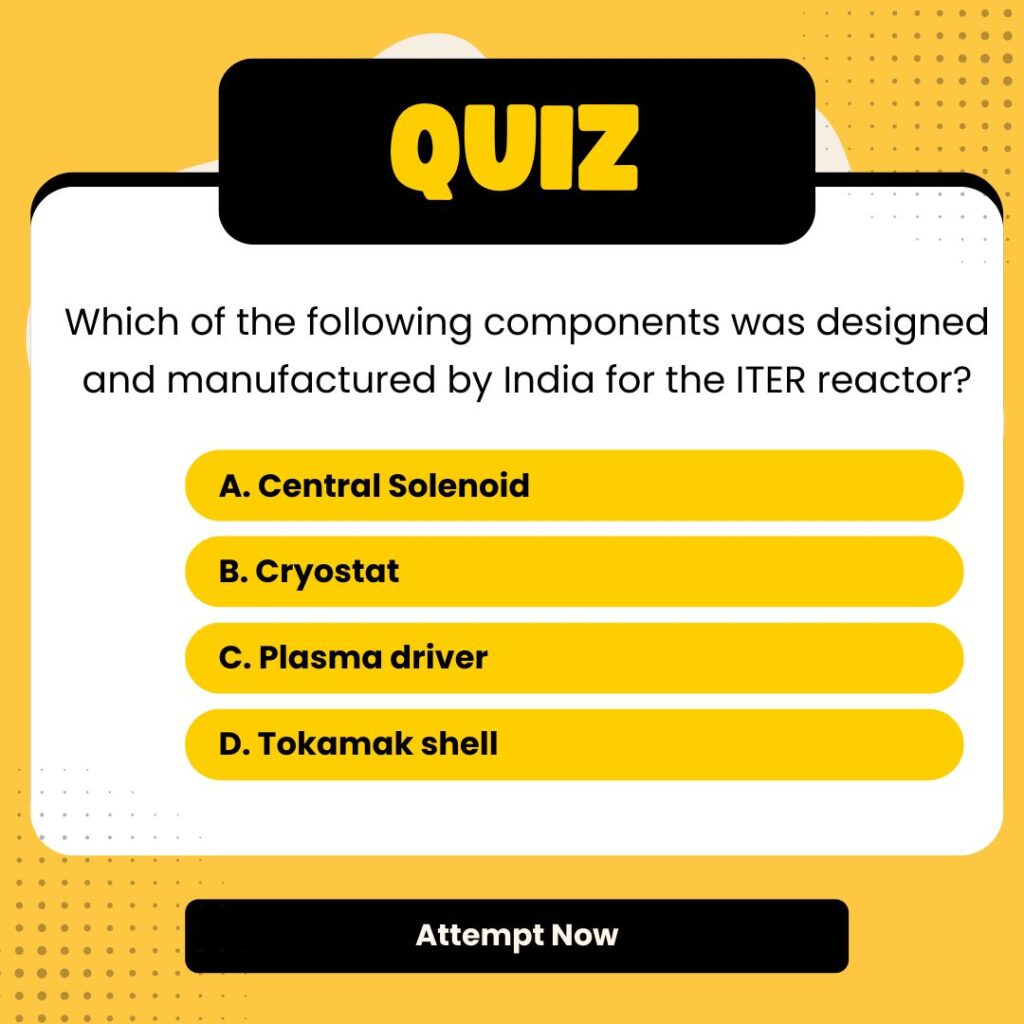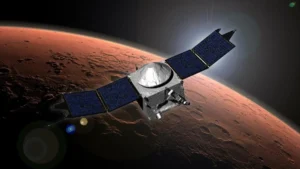India has played a pivotal role in a significant scientific milestone — the completion of the main magnet system of ITER (International Thermonuclear Experimental Reactor), the world’s largest nuclear fusion project. This international collaboration aims to harness the power of the sun to produce clean, carbon-free energy. India’s contributions include designing and manufacturing the cryostat chamber and developing critical cooling and heating infrastructure that forms the backbone of the fusion reactor.
Why in News?
Scientists working on ITER have successfully completed its Central Solenoid — the core magnet system — marking a major step towards initiating controlled nuclear fusion. India, one of the project’s founding members, has significantly contributed to its infrastructure, underlining the country’s growing global role in cutting-edge energy research.
About ITE
- Full Form: International Thermonuclear Experimental Reactor
- Goal: To demonstrate the feasibility of fusion energy at an industrial scale
- Members: 7 main members – India, China, USA, Russia, Japan, South Korea, and the European Union (host)
- Location: Cadarache, southern France
- Output Target: 500 MW of fusion power from 50 MW input (10x energy gain)
India’s Contributions
Cryostat Design & Manufacture
- Size: 30 meters tall & wide
- Function: Houses the Tokamak; maintains ultra-cold environment
- Cryolines: Transports liquid helium to cool magnets to −269°C for superconductivity
- In-wall Shielding & Cooling Systems: Provides protection and maintains structural stability
- Heating Systems: Capable of raising plasma temperatures to over 150 million °C
Recent Milestone – Magnet System
- Completion of the sixth module of the Central Solenoid (built in the US)
- Central Solenoid: The electromagnetic “heart” that controls the superhot plasma
- Strength: Enough magnetic force to lift an aircraft carrier
Global Collaboration Highlights
- Construction Cost: EU bears 45%, others contribute ~9% each
- Research Benefits: Equal access to research outcomes, data, and patents
- Components: Sourced from 30+ countries, 100+ factories on 3 continents
- 2025 Achievement: First vacuum vessel module inserted ahead of schedule
Future Prospects
- ITER will not produce electricity but act as a testbed
- Objective: Achieve “burning plasma”, i.e., self-sustaining fusion
- Data will guide commercial fusion reactors development
- Private sector participation increasing through partnerships
| Summary/Static | Details |
| Why in the news? | India Helps Complete Key Magnet System for ITER |
| Project Name | ITER – International Thermonuclear Experimental Reactor |
| Objective | Demonstrate large-scale, carbon-free fusion power |
| India’s Key Contributions | Cryostat, cryolines, cooling systems, heating systems |
| Current Milestone | Completion of Central Solenoid Magnet System |
| Host Country | France (Cadarache) |
| Total Members | 7 main members + over 30 countries contributing |
| Output Capacity (Target) | 500 MW fusion energy from 50 MW input |
| Key Feature | Uses fusion, not fission; avoids long-term radioactive waste |
| Research Sharing | All members access patents and data equally |
| Global Significance | Clean, sustainable, and virtually limitless energy solution |




 NASA Loses Contact with MAVEN Spacecraft...
NASA Loses Contact with MAVEN Spacecraft...
 US FDA Qualifies First AI Tool to Accele...
US FDA Qualifies First AI Tool to Accele...
 11th India International Science Festiva...
11th India International Science Festiva...







